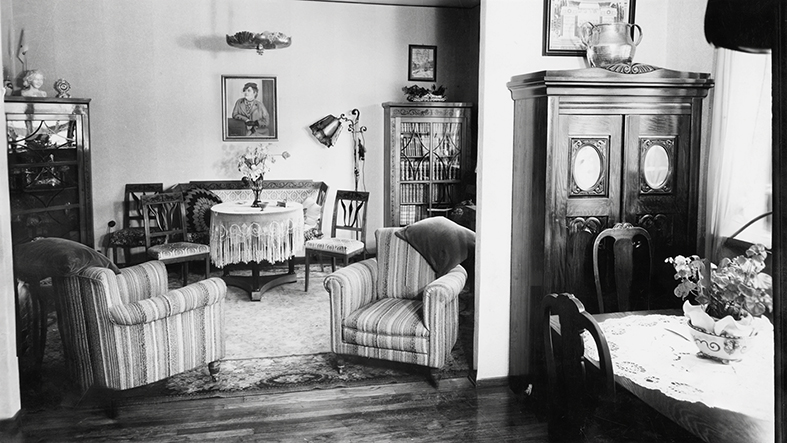In Search of Lost Homes
In Search of Lost Homes

Photo: Oslo Jewish Museum
About the restitution and the project
Of the small Norwegian-Jewish minority of just over 2,000 people, the Nazi perpetrators killed just under 800 people in the Holocaust. In close connection with the physical murders and as part of the genocidal process of erasing Jewish life from Norway, the victims’ property was also confiscated. Parallel to deportations, arrests, and flight to Sweden, their homes, belongings, and businesses were confiscated and scattered to non-Jewish neighbors.
When the surviving Norwegian Jews returned to Norway after liberation in 1945, they began to rebuild their lives after the genocide. Amidst the trauma caused by the persecutions, the grief over murdered family members and friends, and the long road home from Nazi camps and exile in Sweden, they were also confronted with the loss of their homes. The restitution is about far more than the restoration of financial values – the lost assets also had a non-material value. Real estate, movable property, bank accounts and businesses were also childhood homes, wedding gifts, heirloom silver, savings, family businesses and livelihoods. Losing and regaining them meant far more than what can be measured in value on a market.
Between 1945 and 1947, the Storting passed, among other things, four restitution laws – laws on the restitution of and compensation for property that had been lost or damaged as a result of the war. These were primarily intended for bombing victims and resistance fighters. Four restitution institutions were tasked with implementing these laws. But the restitution would prove to be very disadvantageous for Holocaust survivors and large values were not returned to the Norwegian-Jewish minority.
In my doctoral project, I examine how these institutions treated Norwegian Jews who applied to get their homes, belongings, and businesses back. I also examine how Norwegian Jews acted and reacted in the process and how restitution affected their ability to rebuild their lives after the Holocaust. In a larger perspective, the aim of the thesis is to shed light on how Norwegian authorities treated Norwegian Holocaust survivors and Norwegian-Jewish life in the post-genocide era.
Source material and database
My main source material is the approximately 2 500 case files from the restitution institutions belonging to Norwegian Jews – each person who applied for restitution usually had one such file in each institution they came into contact with, containing all documents related to their case. A central tool in my work is a database I developed of all Norwegian Jews and the restitution of their property in the years 1940–1955. Each person has one entry in the database, with information on personal details, family relationships, place of residence, education and occupation, state affiliation, abuses committed against them during the Holocaust and the restitution of their property.
Information on the processing of personal data
In the database I have registered information about around 2 500 people, mainly people who lived between 1940 and 1947. This data is treated with the greatest care, both in the storage and in the dissemination of the findings. Both the database and the sources are stored on three encrypted and password-protected hard drives (storage devices) to which only I have access. The processing of personal data in the project has been approved by NSD/Sikt, the data protection representative at NTNU and by the head of department at the Department of Modern History and Society.
Persons registered in the database have a number of rights to the information I have registered about them, in accordance with GDPR. They have, among other things, the right to access registered information about themselves, the right to correct information about themselves and the right to delete information about themselves. If you would like more information about the processing of your personal data or wish to exercise these rights, contact me at elise.b.berggren@ntnu.no.
